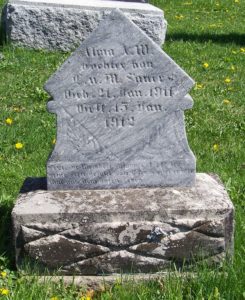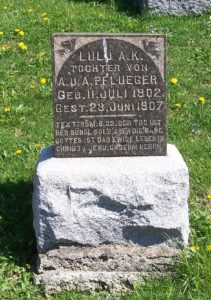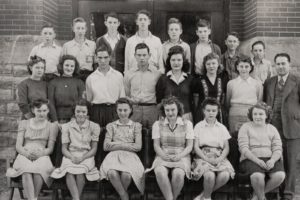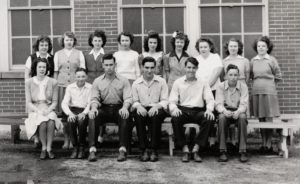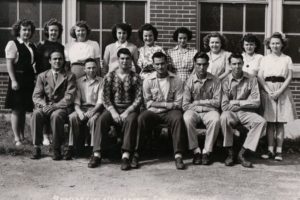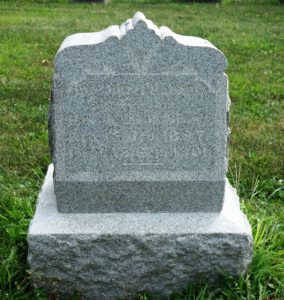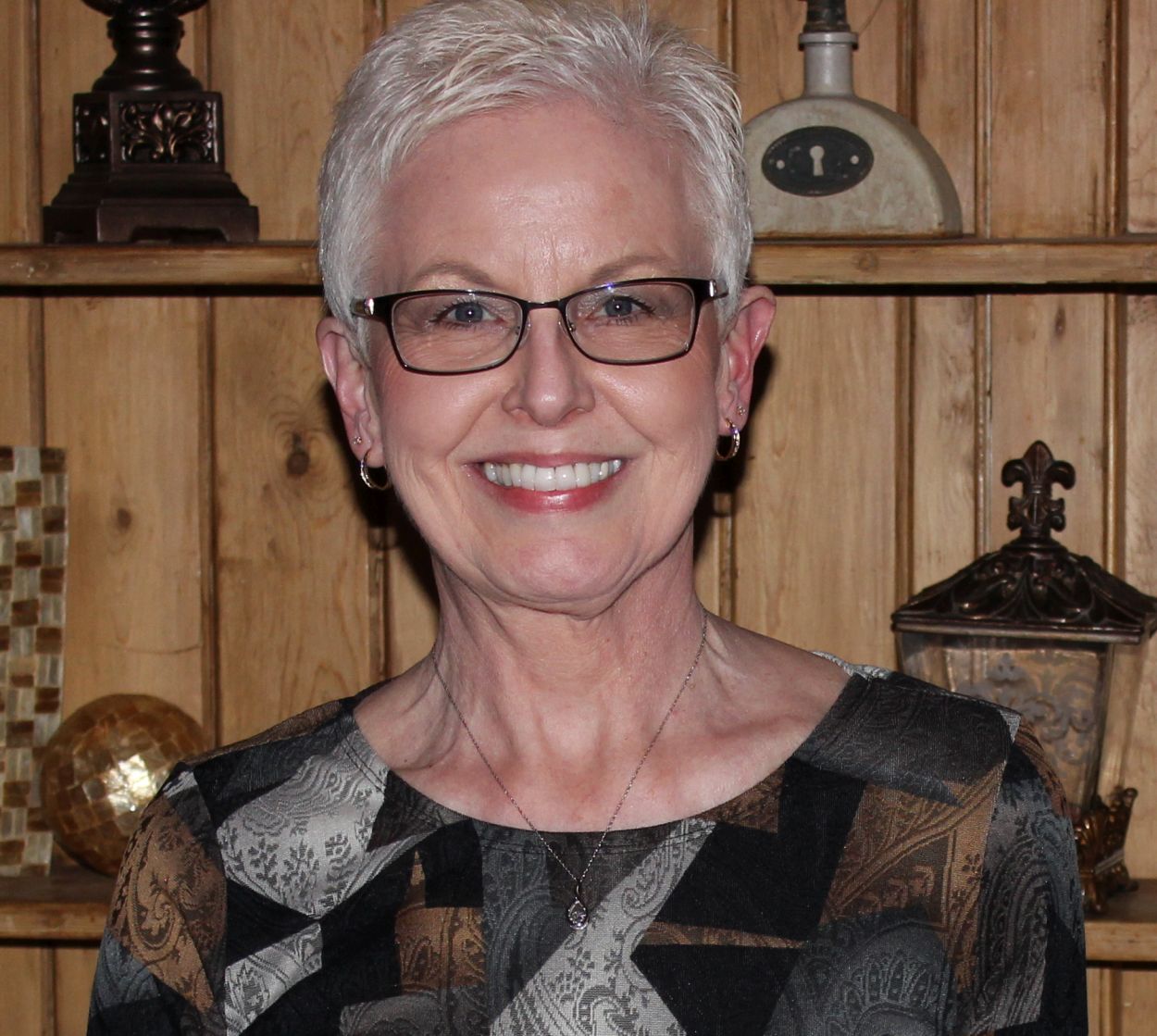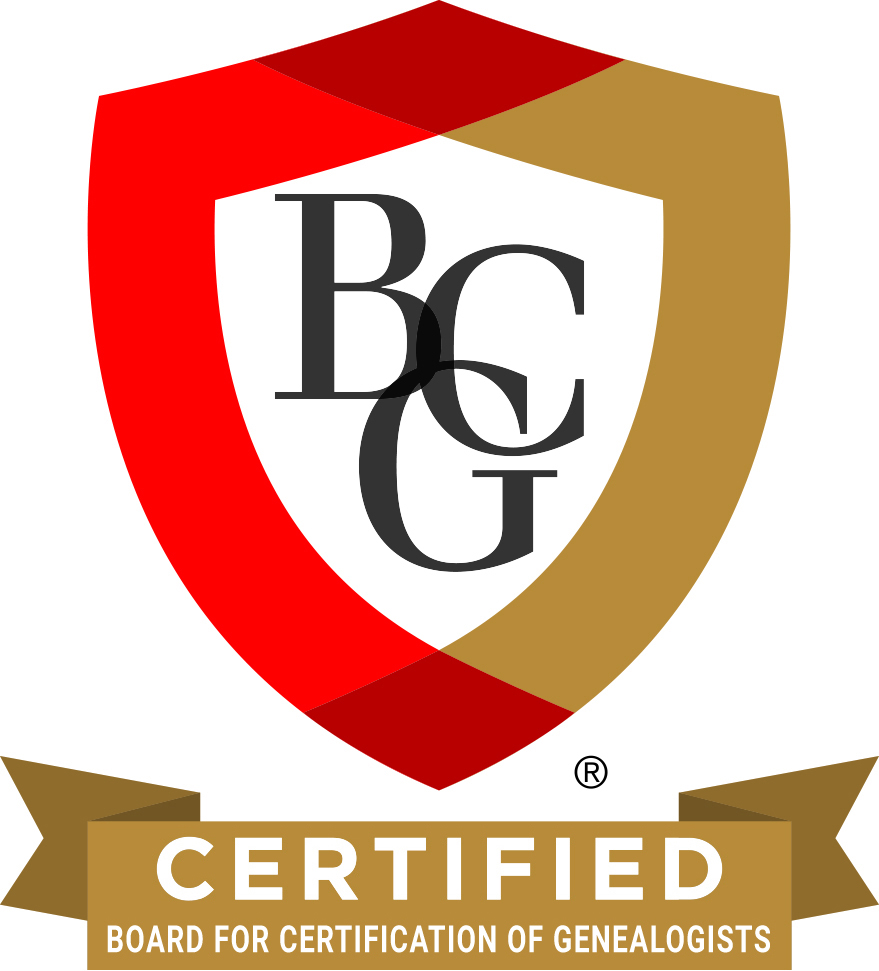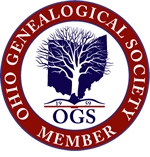Adventure and the quest for fortune have always been alluring to some young men. In the early 1900s the news of the oil strikes and oil fields out West was enough to lure two farm boys from rural Mercer County, Ohio, westward, on a quest to make their fortunes. Those two young men, Christian “Chris” Miller and Jacob Miller Jr, were my great-uncles, brothers of my grandfather Carl Miller. They left their farm life to work in the oil fields of Texas, Oklahoma, and California around 1910.
The two brothers got a taste of the Ohio oil boom when oil was found in the Chatt area a few years before. Maybe they felt they had some oil experience and decided to go west, where oil drilling was on a much larger scale. I am sure two strong, hard-working farm boys had no trouble getting employment in the oil fields anywhere.
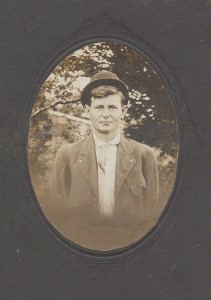
Christian Miller (1880-1911)
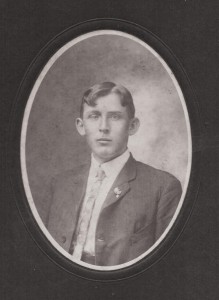
Jacob Miller Jr (1886-1913)
Brothers Chris and Jacob Miller Jr, sons of Jacob Miller, were actually half-brothers. Chris (1880-1911) was the son of Jacob Miller and his second wife Margaretha Strabel. Jacob Jr (1885-1913) was the son of Jacob Miller and his third wife Christena Rueck. I have written about these two before and posted some of their photos taken during the time they were out west. [1]
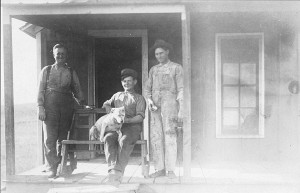
Chris Miller out West
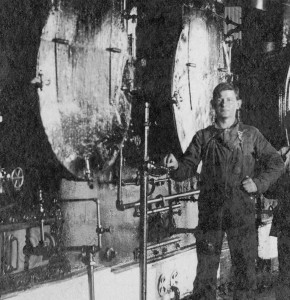
One of the Miller brothers out West
Below are photo segments of one very long, narrow photo, taken 15 March 1911 in Oil Center, California. It is photo number 127, the employees of the A.O. Company, an oil company. The original photo is one of those long panoramic photos, two or more feet long. It was too long for me to put in a scanner, so I took individual photos of it with my camera. The photos below were taken from the left to the right of large photo and would show the whole photo if put together.
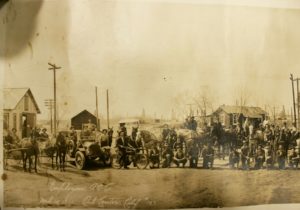
A.O. Co. Employees, Oil Center, CA, 1911 (1)
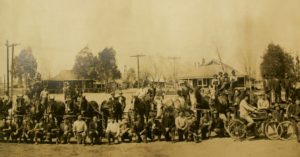
A.O. Co. Employees, Oil Center, CA, 1911 (2)
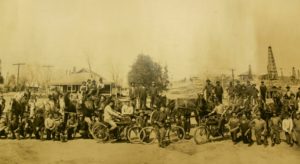
A.O. Co. Employees, Oil Center, CA, 1911 (3)
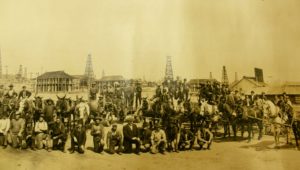
A.O. Co. Employees, Oil Center, CA, 1911 (4)
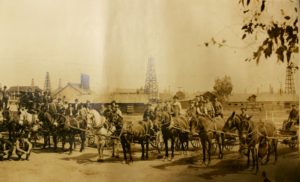
A.O. Co. Employees, Oil Center, CA, 1911 (5)
Chris Miller is supposedly in the photo with the oil workers and I believe I found him. I do not know if Jacob Miller Jr was in this photo, too, but I would not be surprised if he was there, too. The brothers seemed to travel and work together.
I have looked at all the faces in this photo many times and I think Chris and Jacob Jr are in the segment below, situated fairly close together. Chris usually wore a funny little hat that seemed to be too small for him and he had a lot of hair (bangs) off to the right side of his forehead. Jacob Jr was a big guy and this looks like the bib overalls I have seen him wearing in other photos. This is my best guess that these are the Miller brothers.
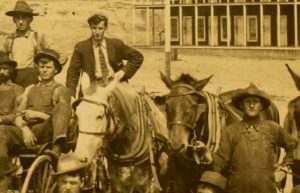
Possibly Chris Miller (seated to left) & Jacob Miller Jr. (standing on the right).
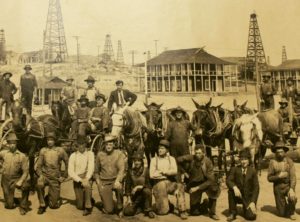
Chris & Jacob Jr among oil employees, Oil Center, California, 1911.
There are many interesting items in this photo. Oil wells and housing are in the background. There are many men, young and old. Men in suits and ties and men in work clothes. Men on horses, wagons, buggies, cars, bicycles, and Indian Motorcycles. There are even a couple dogs and mules.
Look at those old Indian Motorcycles! I watch the American Pickers TV series enough to know that these would be very collectible today. And there are oil wells as far as the eye can see.
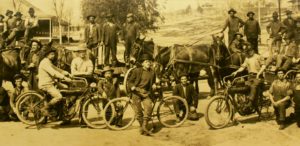
Indian Motorcycles, 1911, Oil Center, California.
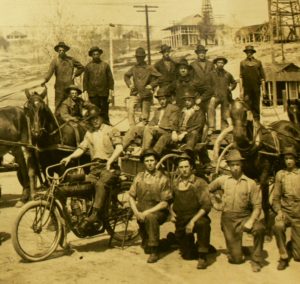
A.O. Employees, Oil Center, CA, 1911
Here are a few close-ups of this photo, showing many interesting faces:
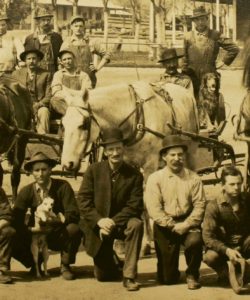
A.O. Employees, Oil Center, CA, 1911
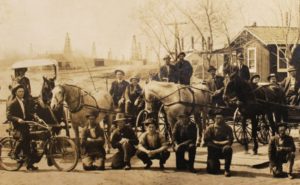
A.O. Employees, Oil Center, CA, 1911

A.O. Employees, Oil Center, CA, 1911
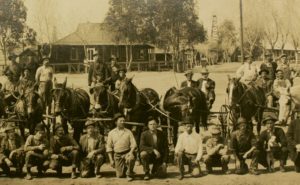
A.O. Employees, Oil Center, CA, 1911
The Miller brothers’ adventure in the western oil fields did not end well for either of them. Chris died from typhoid fever on 24 October 1911, in Wichita Falls, Texas. He died a little over six months after this large photo was taken.
Jacob Miller Jr died about two years later, on 10 April 1913 in Oklahoma, when an oil derrick fell on him and killed him instantly.
Both young men were returned home to be buried in Zion Lutheran Cemetery, Chattanooga, Ohio.
[1] “Tombstone Tuesday—Jacob Miller (Jr),” Karen’s Chatt, 26 Jul 2011, https://karenmillerbennett.com/miller/tombstone-tuesday-jacob-miller-jr/ and “Tombstone Tuesday—Christian Miller,” Karen’s Chatt, 19 Jul 2011, https://karenmillerbennett.com/miller/tombstone-tuesday-christian-miller/ and “Tragedy in the Oil Fields,” Karen’s Chatt, 14 Nov 2014, https://karenmillerbennett.com/miller/tragedy-in-the-oil-fields/

